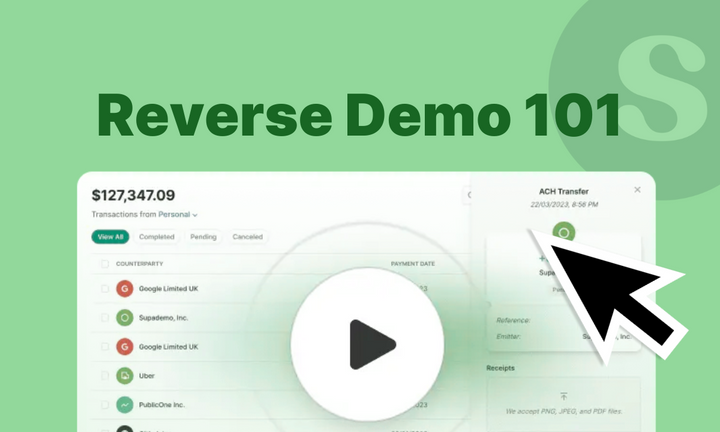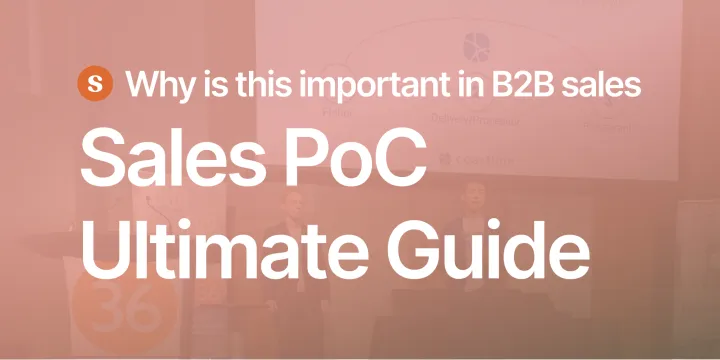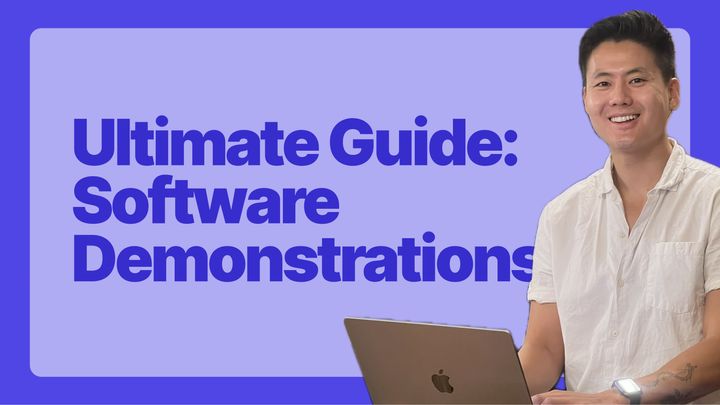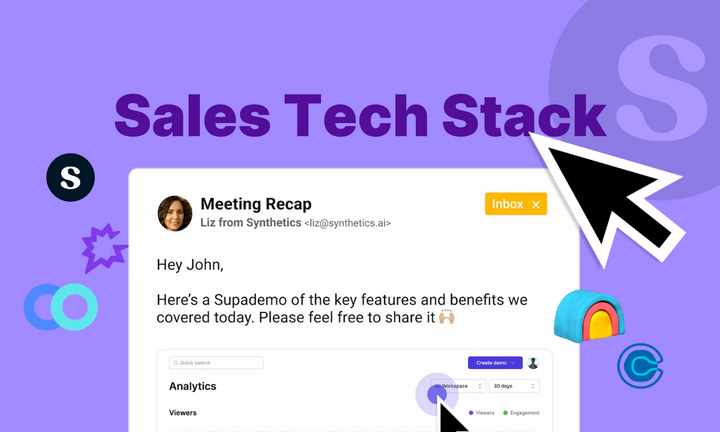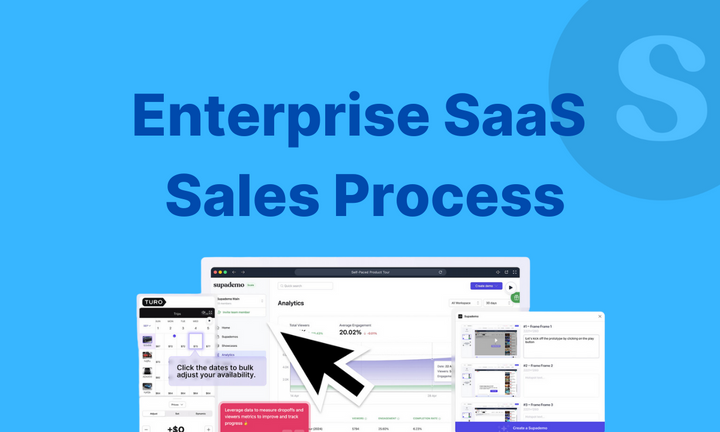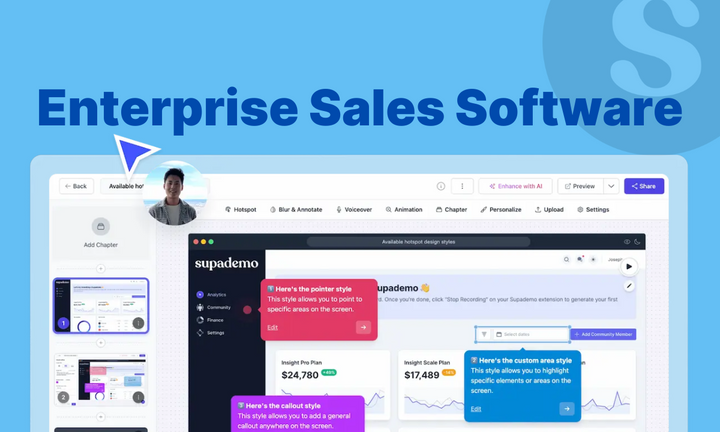When you showcase your product to prospects, do they truly engage with your presentation or simply nod along? Traditional product demos often follow a predictable format: a sales representative walks through features while prospects passively watch. This approach leads to information overload, minimal retention, and missed opportunities to address specific pain points.
Reverse demos put your prospects in control and turn them into active participants. Letting prospects drive the product experience creates more meaningful engagement that leads to better understanding and faster buying decisions.
In this guide, you'll learn what a reverse demo is, why it works better than conventional approaches, how to execute one effectively, and when this technique delivers the best results for your sales enablement efforts. So, let’s get into it!
What is a reverse demo?
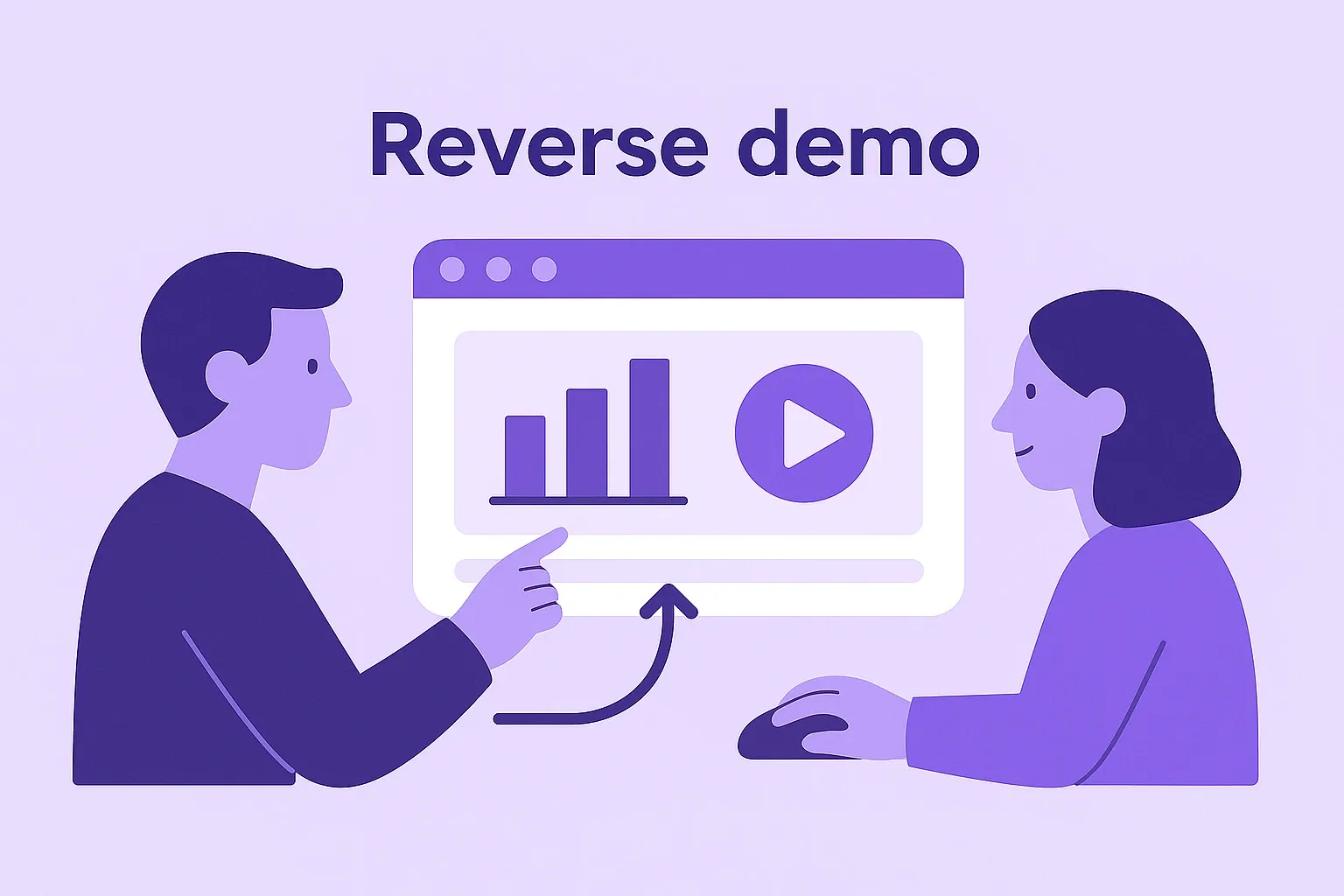
A reverse demo is a sales presentation approach where your prospect actively drives the product demonstration. Instead of watching a prepared walkthrough, prospects take control of the product interface, exploring features that matter most to them while your team provides guidance.
It's similar to the difference between watching someone drive a car versus sitting in the driver's seat yourself. The hands-on experience creates a deeper understanding and stronger memory retention.
Traditional demos vs. reverse demos
| Aspect | Traditional Demo | Reverse Demo |
|---|---|---|
| Who drives | Sales rep controls and presents | Prospect controls the product |
| Engagement level | Passive (watching/listening) | Active (doing/experiencing) |
| Retention | Lower retention of information | Higher retention through direct interaction |
| Personalization | Generic or lightly tailored content | Deeply personalized to prospect needs |
| Feedback quality | Limited, often delayed insights | Immediate, actionable observations |
| Focus | Feature-centric presentation | Problem-solving and value discovery |
Most traditional demos fall short because they prioritize full feature coverage over meaningful engagement. When prospects don't actively participate, they remember less and struggle to connect product capabilities to their specific needs.
Reverse demos solve these limitations by creating a collaborative environment where prospects discover value through direct experience rather than sales pitches.
Key benefits of the reverse demo approach
Reverse demos offer several important advantages over traditional presentation-style demos. These benefits directly solve common sales challenges like prospect engagement, need discovery, and building genuine trust during the sales process.
- Improves engagement and attention spans - When prospects drive the demo, they naturally pay closer attention and stay engaged throughout the session. Their active participation creates a stronger focus than passive viewing ever could.
- Uncovers hidden needs and priorities - As prospects use your product, they reveal their true interests, challenges, and priorities through their questions and the features they explore. This provides your team with valuable insight that might never surface during a scripted presentation.
- Builds trust through autonomy - Giving prospects control demonstrates confidence in your product and respect for their time and intelligence. This builds credibility and shows you're genuinely interested in solving their problems, not just making a sale.
- Provides unmatched buyer signals - Observing how prospects interact with your product generates authentic feedback about what confuses them, what excites them, and what matters most to their business. These insights help your sales and product teams refine both your offering and your pitch.
- Creates faster product understanding - Direct interaction helps prospects discover value faster and more naturally than when being told about features. These self-discovered moments of realization create stronger buy-in and enthusiasm.
How to run an effective reverse demo
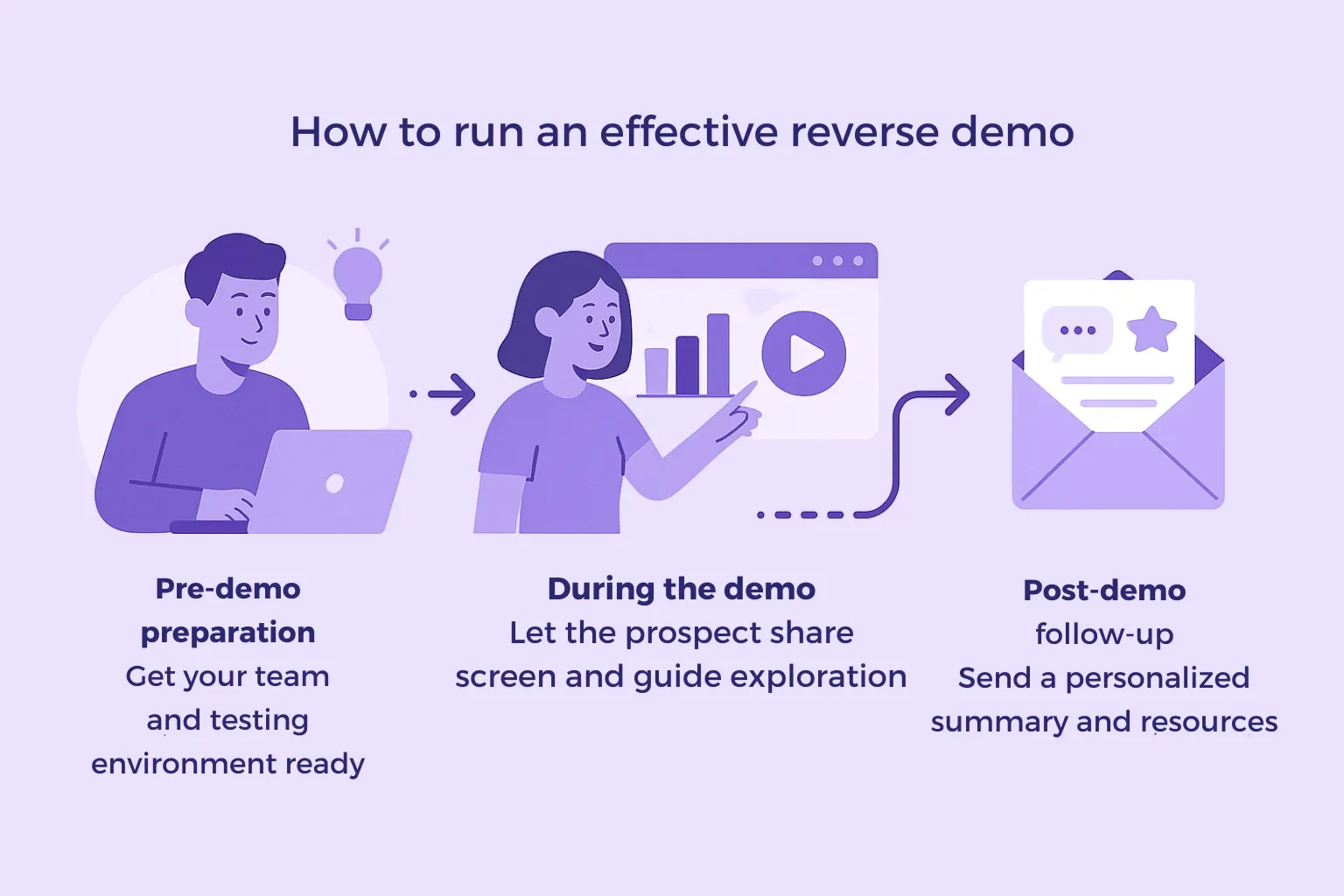
Successfully implementing the reverse demo approach requires thoughtful preparation and guidance. Follow these steps to maximize your results:
Pre-demo preparation
Effective reverse demos require thoughtful preparation before the prospect ever joins the call. A well-planned session ensures both your team and the prospect can focus on value discovery rather than technical issues or confusion.
- Thoroughly prepare your team - Ensure your sales representatives understand the product deeply enough to guide prospects through any scenario or question that might arise during the demo.
- Create a safe testing environment - Set up a sales demo environment with sample data that resembles your prospect's real-world scenarios. This sandbox should allow exploration without risk of breaking anything or accessing sensitive information.
- Brief your champions ahead of time - When possible, connect with internal champions at the prospect's company before the scheduled demo. This preparation helps them feel comfortable taking the lead and sets clear expectations.
- Prepare guiding questions - Develop a set of open-ended questions that can help direct the exploration if prospects need prompting or seem unsure where to start.
During the demo
The actual demo session marks a shift from traditional selling to collaborative discovery. Your role changes from presenter to guide, helping the prospect explore solutions to their specific challenges.
- Start with clear framing - Begin by explaining the reverse demo concept and why it delivers better results than traditional presentations. Set expectations and reassure prospects that your team will provide guidance throughout.
- Have the prospect share their screen - Ask your prospect to share their screen while they navigate the product. This maintains their sense of control while allowing your team to observe their experience and provide timely guidance.
- Use targeted questions - Guide the session with thoughtful questions like "What process are you currently using for this task?" or "Which aspect of this workflow would save you the most time?"
- Turn questions into discovery opportunities - When prospects ask about a specific feature, resist the urge to simply explain it. Instead, direct them to explore it themselves by saying: "Great question, let's click on that section and you can see how it works."
- Celebrate discoveries - When prospects find valuable features or insights, acknowledge and reinforce those moments: "That's exactly how our customers in your industry leverage that capability to reduce processing time."
Post-demo follow-up
The moments after a successful reverse demo provide an essential opportunity to maintain the connection and keep the sales process moving forward. This phase turns an interactive experience into a clear path toward solving your prospect's business challenges.
- Provide access to a community - Invite prospects to join user communities or support channels where they can continue learning and asking questions.
- Tailor resources to their interests - Based on the specific features and workflows they explored, share relevant sales collateral, guides, and case studies that address their unique needs.
- Summarize key discoveries - Send a follow-up that highlights the valuable insights and capabilities the prospect discovered during their session, reinforcing the personal value proposition.
- Create a clear path forward - Outline specific next steps based on what you learned during the reverse demo, focusing on the prospect's demonstrated priorities rather than a generic sales process.
👉 Learn more about how sales teams are using interactive demos in the State of Interactive Demos 2026 report
Best practices for reverse demos
Success with reverse demos requires proper planning and execution. These guidelines will help you create a comfortable environment where prospects can explore freely while still receiving the guidance they need to find value quickly.
- Set clear expectations from the start - Many prospects are accustomed to passive demos and may initially feel uncomfortable taking control. Ease this transition by explaining why this approach will deliver more value and what they can expect throughout the session.
- Personalize to business contexts - Before the demo, research the prospect's industry, role, and likely use cases. Prepare relevant examples and scenarios they can explore that directly connect to their business challenges.
- Connect features to business outcomes - Help prospects understand the "so what" behind each feature by asking questions like "How would reducing that processing time impact your quarterly objectives?"
- Capture detailed feedback for product improvement - Document the questions, confusion points, and excitement moments prospects experience during reverse demos. This valuable input should flow directly to your product team to guide future development.
- Ensure smooth handoffs to customer success - When prospects become customers, share the insights gathered during the reverse demo with your onboarding and revenue operations teams to create continuity in their experience.
When to use a reverse demo: ideal scenarios & suitability
While powerful, reverse demos aren't appropriate for every situation. They work best in these scenarios:
| Scenario | Suitability | Why It Works | Example |
|---|---|---|---|
| Complex products with multiple use cases | ⭐⭐⭐⭐⭐ | Allows prospects to focus on the workflows relevant to them | CRM platforms with marketing, sales, and service modules |
| High-consideration purchases | ⭐⭐⭐⭐⭐ | Builds confidence through hands-on experience | Enterprise software with annual contracts |
| Products with intuitive interfaces | ⭐⭐⭐⭐ | Minimizes friction during prospect exploration | Modern SaaS tools with user-friendly designs |
| Early-stage prospects still defining needs | ⭐⭐⭐⭐ | Helps uncover true requirements through interaction | Project management tools with flexible workflows |
| Technical buyer evaluation | ⭐⭐⭐⭐⭐ | Satisfies the need for deep technical understanding | Developer tools and APIs |
| Products requiring minimal setup | ⭐⭐⭐⭐ | Enables immediate hands-on interaction | No-code platforms and website builders |
| Highly configurable platforms | ⭐⭐⭐⭐⭐ | Demonstrates flexibility through direct experience | Analytics dashboards and reporting tools |
Reverse demos are particularly effective for revenue operations solutions where buyers need to understand how a tool fits into their existing tech stack and processes.
However, reverse demos may not be ideal for extremely complex products requiring extensive setup or when presenting to very large groups where individual control becomes impractical.
Real-world examples & outcomes of reverse demo
Organizations across different industries use the reverse demo approach to achieve great results. For instance:
- Data enrichment workflow solutions - Companies offering data enrichment tools use reverse demos to show how their solutions integrate with existing CRM systems. During these demos, prospects can test the data enrichment process with their own sample records, seeing firsthand how the tool enhances their database.
- Sales automation platforms - Providers of sales automation tools implement reverse demos by allowing prospects to set up actual automation workflows. This hands-on approach helps buyers understand how the tool fits into their existing processes before making a purchase decision.
- AI-powered sales enablement - Vendors of AI sales tools use reverse demos to demonstrate how their technology analyzes conversations and provides insights. Prospects can test the AI capabilities with their own scenarios, making the benefits immediately tangible.
- SDR enablement software - Companies offering AI SDR tools conduct reverse demos where prospects can create outreach sequences and test response generation. This approach helps buyers clearly see how the tools would function within their specific outreach strategies.
Tools & platforms to enable reverse demos
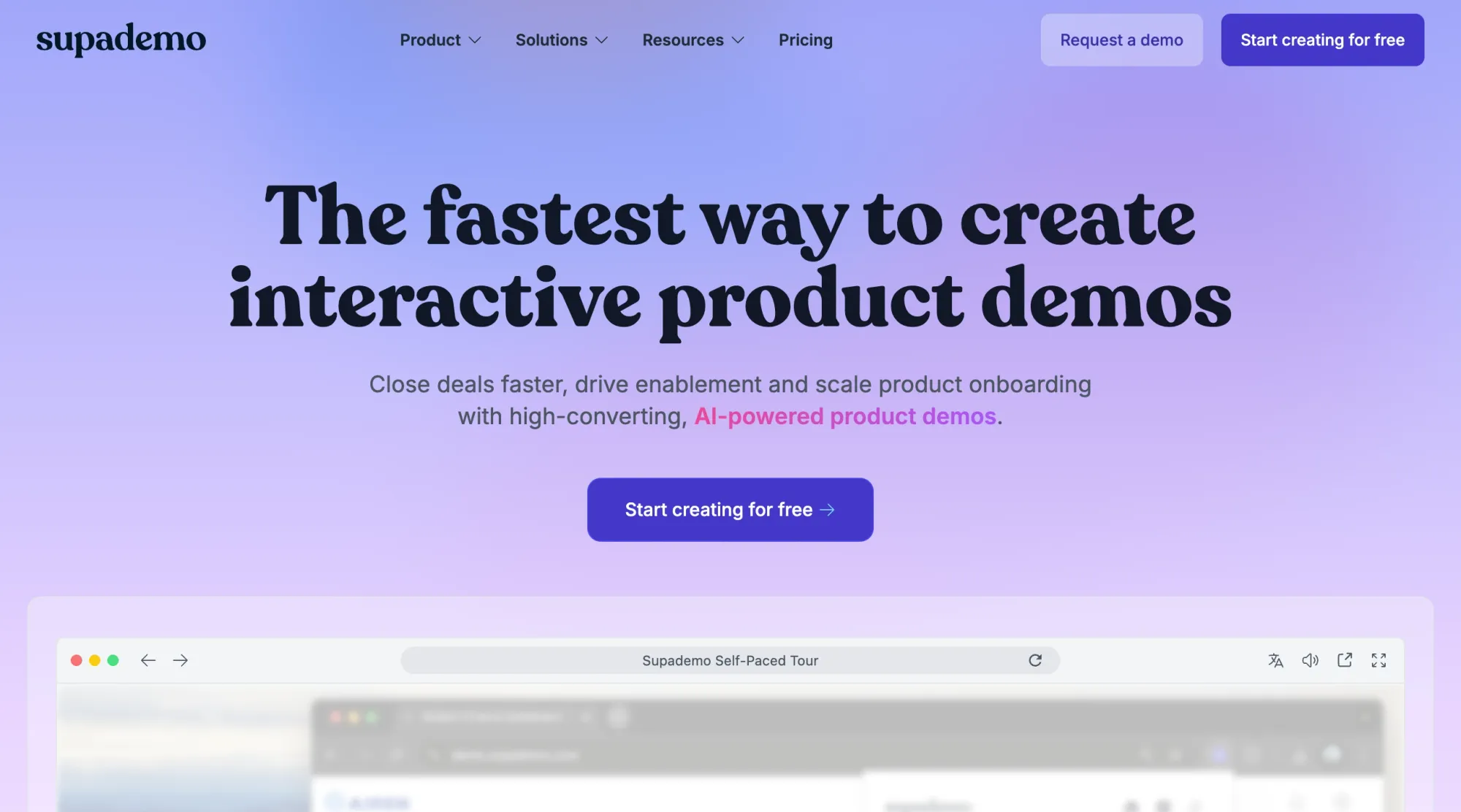
Modern technology has made implementing reverse demos more accessible than ever. Among the various solutions available, Supademo stands out as a powerful platform specifically designed to create interactive product demonstrations.
Supademo offers a wide range of features that support effective reverse demos:
- Interactive capture - Record fully functional demos of your product using HTML capture that prospects can actually interact with and learn more about the product.
- Personalization capabilities - Customize demos for different prospect types by using dynamic variables, conditional branching, and custom branding to make each demo relevant to the specific viewer.
- Analytics and insights - Track how prospects engage with your demos, identify where they spend the most time, and pinpoint where they may drop off, providing valuable signals for your sales team.
- Guided interactions - Create screenshot or video-based demos with interactive hotspots, tooltips, and chapters that give prospects freedom to explore while still guiding them toward key value propositions.
With tools like Supademo, you can prepare sandbox environments that allow prospects to safely experiment with your product during reverse demos without risk to production systems. This creates a safe space for exploration while maintaining the stability needed for effective demonstrations.
What makes Supademo particularly suitable for reverse demos is their ability to create authentic product experiences without requiring extensive technical setup.
Sales teams can quickly prepare personalized demonstrations that prospects can drive themselves, removing the barriers that often complicate traditional demo approaches.
Final thoughts
The reverse demo represents a big shift in how you engage prospects transitioning from telling to experiencing, and from passive to active participation. Putting your prospects in control creates more meaningful interactions that uncover true needs, build genuine confidence in your solution, and accelerate buying decisions.
As you implement this approach, it is worth noting that the goal isn't simply to change who's clicking through your product but to create a collaborative discovery process. The most successful reverse demos balance prospect exploration with expert guidance, establishing a partnership dynamic that extends well beyond the sale.
Start small by incorporating reverse demo elements into your existing processes, gather feedback, and refine your approach based on what works best for your specific product and prospect base.
Ready to improve your product demonstrations from passive presentations to interactive experiences? Supademo helps you create engaging, interactive product demos that put your prospects in control while guiding them to value. Try Supademo for free now to see how interactive demonstrations can improve your sales process.
Frequently asked questions (FAQs)
What is a reverse demo?
A reverse demo is a sales approach where the prospect drives the product demonstration instead of the sales representative, creating an interactive, hands-on experience that improves engagement and retention.
What if a prospect is hesitant to drive the demo?
Begin with a brief overview to build comfort, then suggest a specific, simple task they can try. Gradually transition control as their confidence grows.
How do you handle technical issues during the session?
Prepare a backup plan like taking back control temporarily or switching to a pre-recorded demo if needed. Use technical moments as opportunities to showcase your support capabilities.
Can reverse demos work for simple products?
Yes, though the benefits are most pronounced with complex products. For simpler offerings, focus on having prospects explore their specific use cases in depth.
How do you measure the success of a reverse demo?
Track metrics like prospect engagement during the session, post-demo advancement rates, deal velocity, and post-sale adoption metrics compared to traditional demos.


